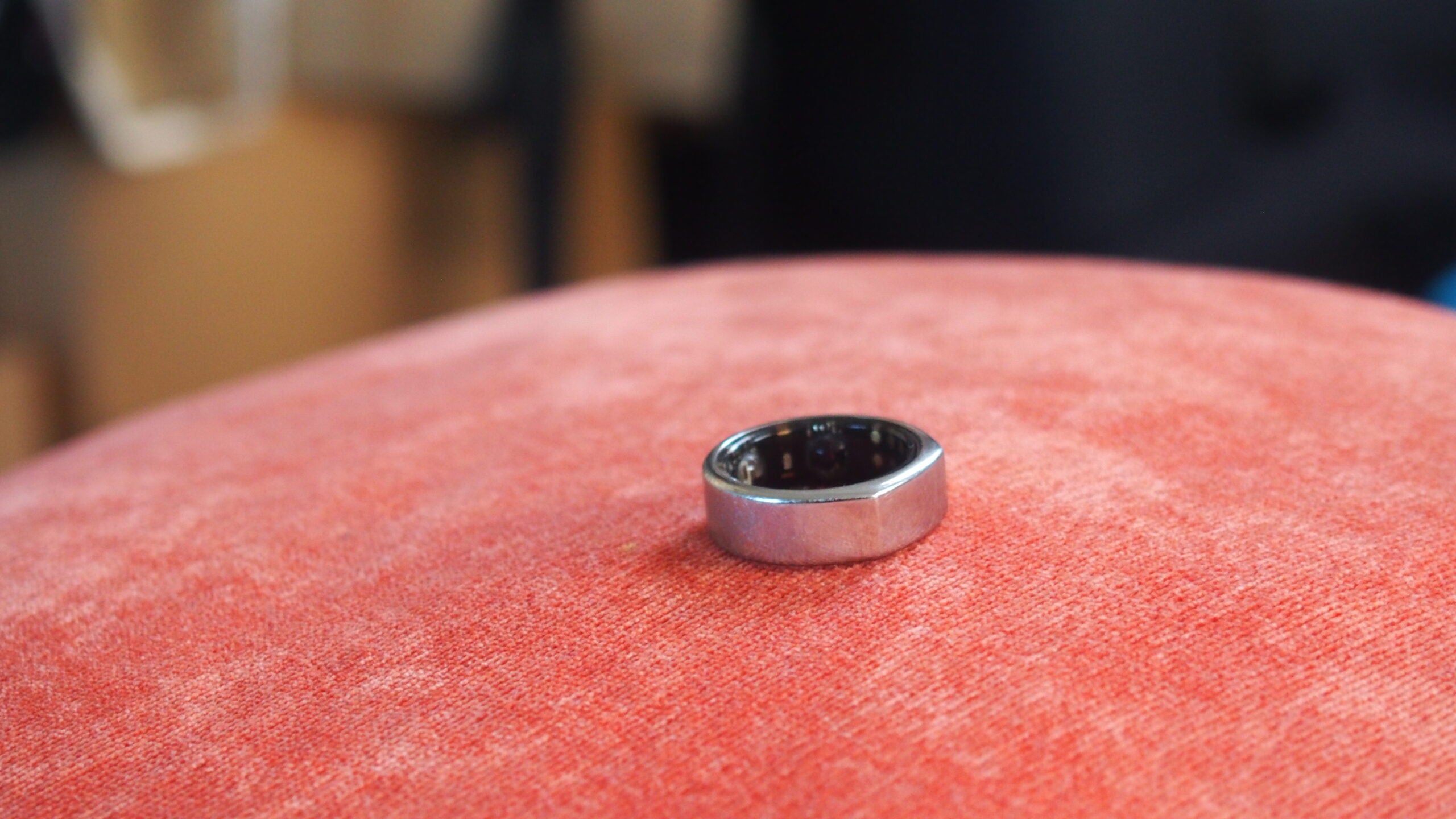Verdict
The Oura Ring 3 is the best smart ring you can buy.
Pros
- Reliable sleep tracker
- Easy-to-use companion app
- Comfortable to wear 24/7
Cons
- Can pick up scratches
- Exercise HR support unreliable
- Battery drain when SpO2 enabled
Availability
- UKRRP: £299.99
- USARRP: $349
-
Tracking skillsTracks heart rate, temperature and blood oxygen data -
Automatic activity detectionNo need to faff with the app to get a workout going -
Up to seven days of battery lifeYou won’t be charging it every night
Introduction
Smart rings are a thing, and the one that’s leading the charge to move tracking away from the wrist is Oura.
The Oura Ring 3 is the brand’s third-generation smart ring, now packing more sensors, promising to track health, sleep, fitness and wellness better than its previous rings.
You’ll still need to pay for the wearable that lives on your digit as well as for full access to the software that delivers your stats and insights, which can also tell you whether you’re under the weather or getting good enough sleep.
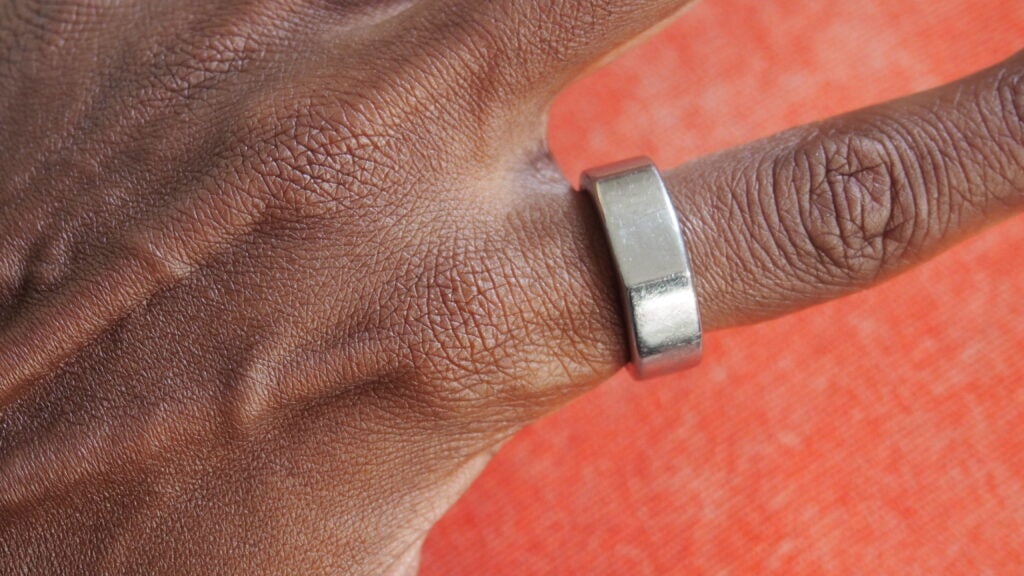
Design and comfort
- Available in five colours
- Made from titanium
- Weighs 4-6g
The most appealing aspect of Oura’s rings has been the fact that they look like very stylish and elegant rings that also happen to house some tech. That doesn’t change with the latest release.
Once you’ve gone through the sizing part of the process, picking a ring size that works, you can choose from five different colours and two ring styles. The Horizon version features a fully round ring design, while the Heritage model has a flatter top edge, which will sit on the top of the finger. Both versions are made from titanium to help give the ring a light yet high-grade feel, with a PVD (physical vapour deposition) coating adding a layer of resistance against scratches.
However, the added coating didn’t quite have the desired effect of guarding against those scratches on the silver Heritage Ring I tested. Oura does now state that daily wear may result in scratches, and that’s what I’ve seen over months of living with it. That attraction to scratches doesn’t entirely ruin the attractiveness, but it’s definitely a shame it doesn’t do a better job of keeping it box-fresh.
The ring is comfortable to wear day and night, and it’s easy to ignore the sensor array that sits inside it. As it weighs 4-6g (depending on the style) and is 2.5mm thick, it’s not bulky, either.
To further encourage you to wear it 24/7, the Oura Ring 3 carries a water-resistant rating that makes it safe to be submerged in water up to 100m. I showered with it and took it to the pool and have no issues to report on the durability front.
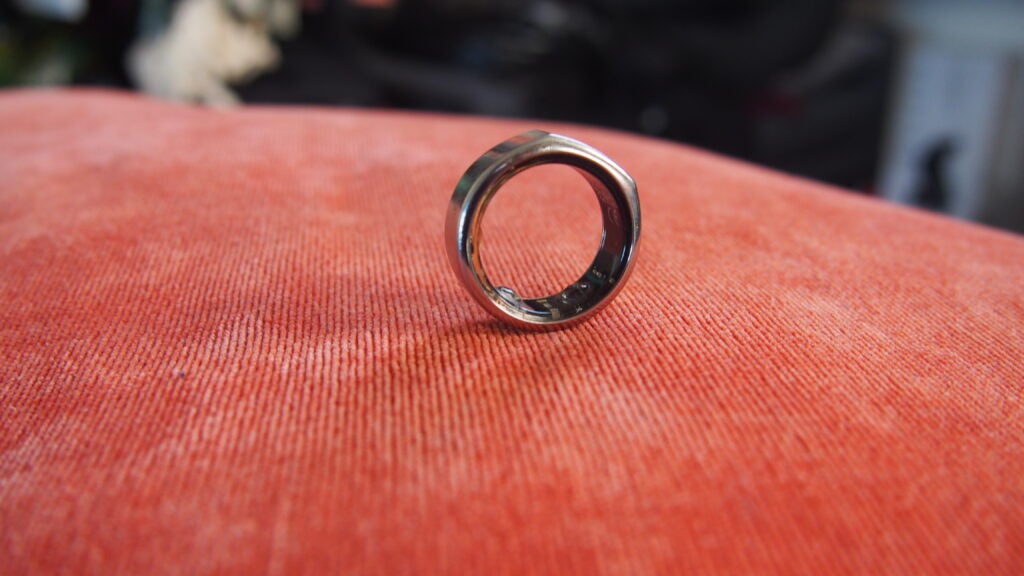
Fitness and health tracking
- Blood oxygen sensing
- Activity and sleep tracking
- Skin temperature monitoring
- Exercise HR
Beneath that titanium exterior, the Oura Ring 3 manages to pack in a strong array of sensors. There’s an optical heart rate sensor, which you can identify from the green LEDs that illuminate the underside of the ring. There’s a red infrared sensor to monitor blood oxygen levels, and there are also skin temperature sensors and an accelerometer, to handle step tracking and deliver sleep monitoring in the same way as most wrist-worn wearables.
Those sensors provide a range of metrics that are primarily used to generate Readiness scores – grabbing information like resting heart rate, body temperature, sleep and sleep balance to assign a score out of 100. The higher the number, the better equipped you are to tackle the day.
The Readiness scores hugely rely on the sensors being able to accurately generate data, and I’d say, on the whole, they do. For resting heart rate, I found the average was within 3-4bpm of Fitbit’s pretty reliable continuous and resting heart rate readings. The Oura Ring 3 did seem to have the odd tendency to report low heart rate readings – just below my usual early 40bpm, which I think may be attached to some movement of the ring that will impact the reliability of those readings.
Oura continues to conduct its own research to validate its technology, with one study suggesting its PPG (photoplethysmography) sensor matched with clinical-grade ECG (electrocardiogram) sensors. I definitely saw good accuracy, although I’d debate if it’s ECG-grade.
The ring also tracks body temperature to influence that Readiness score. This can indicate when you might be coming down with something. When I got Covid, my body temperature rose by 2.2°C, and I was able to track it starting to return to normal as I recovered. During that period of illness, the app suggested switching to a rest mode and stopping tracking until I would start to feel better again.
Another key aspect that Readiness scores is sleep tracking. I’d say this is a real strength of Oura’s from a comfort point of view of taking a ring to bed as opposed to a watch. It will break down total sleep, time spent in bed, and sleep efficiency as well as track blood oxygen saturation, which reassuringly indicated I had optimal breathing regularity on the nights I tested it.
The ring also tracks heart rate and heart rate variability, which is a heart-based measurement that offers an indication of stress being put on the body. That core sleep-tracking experience was up there with Fitbit in terms of measuring the length of sleep time, and it offered similar Awake, REM, Deep, and Light sleep stages.
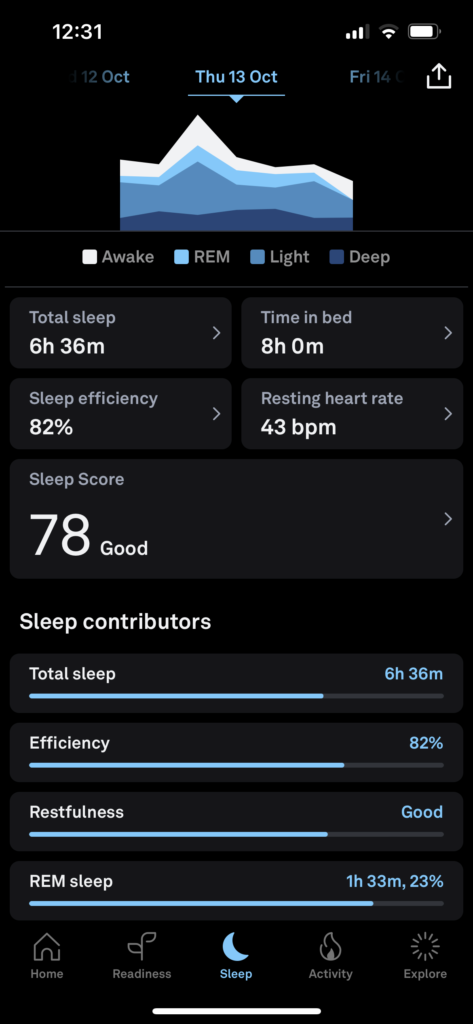
Oura also pays attention to movement and how active you are, by using the onboard accelerometer to track steps and the distance walked. It’s capable of automatically recognising when you’ve exercised with the ring on, but it will also let you manually add workouts and has now added the ability to track heart rate in real time during workouts.
Doing the latter reliably is perhaps an area still in need of improvement. It actually did a very good job of automatically detecting workout types, which were generally swimming, runs, indoor workouts and gym sessions. Manually adding a workout was relatively straightforward, although, for me, recording workout heart rate was generally pretty unreliable. At the end of some workouts, it would suggest the ring had moved during the workout, which affected delivering reliable readings.
You can import workout data from Apple Health, Google Fit and Strava to get useful Activity data and better shape those Readiness scores.
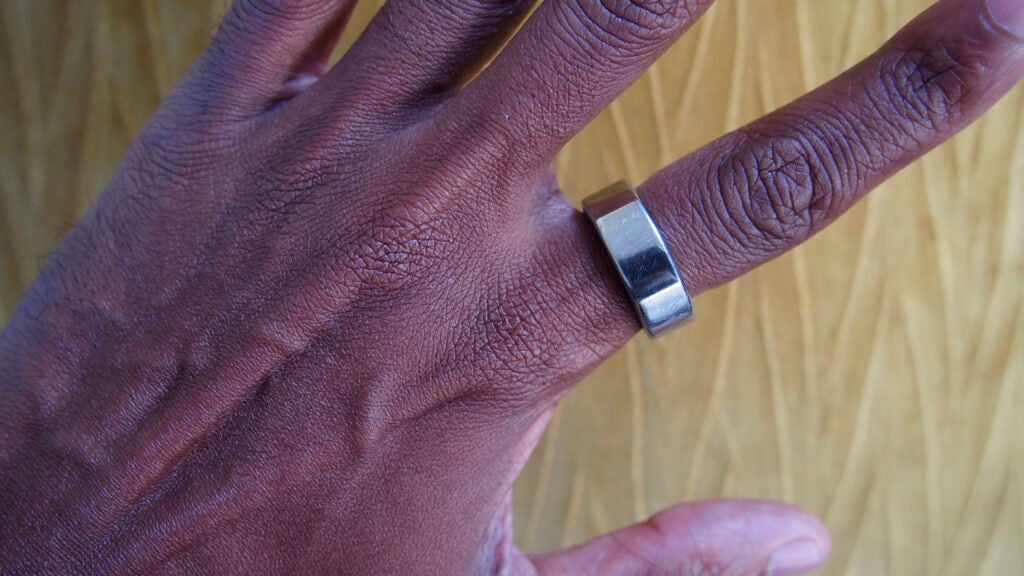
App
- Available for Android and iOS
- Membership required for full access
The Oura Ring 3 doesn’t include a screen, so you’ll need to download the Oura companion app, which is available for Android and iOS. I used the Ring 3 with both platforms and found the experience to be pretty consistent across the two platforms.
You can access and use the app for free, but you’ll need the £5.99-a-month subscription to see data beyond Readiness, Sleep, and Activity scores and some basic profile information. The ring comes with one-month complimentary access, but then it’s time to start paying up. Having said that, the membership here is half the price of a monthly Spotify Premium subscription, while sleep and recovery wearable Whoop’s subscription service ranges from £18 to £27 a month.
What you do get with the Ring app is an environment that rivals Fitbit in terms of feeling like a place that isn’t daunting or overwhelming to use. The big emphasis on the Readiness scores and the attached recommendations and advice works well. You can dig into individual data and metrics if you want, but you can quickly establish if you need to pay attention to your sleep time or to something else that has impacted your Readiness score.
There are also some useful additional features built around helping you to fall asleep or relax. This is done through audio-guided sessions. Some are breathing exercises, while others tell you relaxing stories to get you ready for some slumber.
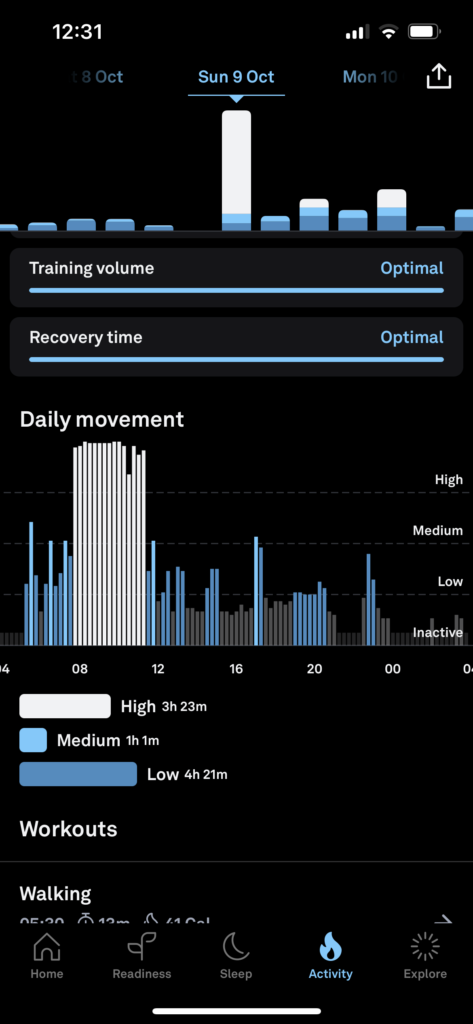
Battery life
- Up to seven days of battery life
- Fully charges in 20 to 80 minutes
- Proprietary charging cradle
Oura says its newest ring is capable of going for up to seven days without charge, but I’d say that’s hugely ambitious. In fact, it’s a fair amount less than that – think two or three days max.
Prior to turning on the dormant SpO2 sensor, the ring could last just about four days, continuously monitoring heart rate, sleep, and metrics like body temperature.
Enabling the SpO2 had a sizeable impact on battery performance – in a similar way that turning on the Pulse Ox sensor on Garmin’s watches results in a bigger drain on the battery.
There’s no way to disable any of the monitoring features, which places huge importance on the low-battery phone notifications you can set up to make sure you’re not walking around with a ring that’s no longer smart.
When it comes to charging, there’s a proprietary cradle that plugs into a USB-C cable. When you drop the ring on it, a single notification light will indicate it’s in charging mode – at least Oura has delivered a pretty simple charging setup.
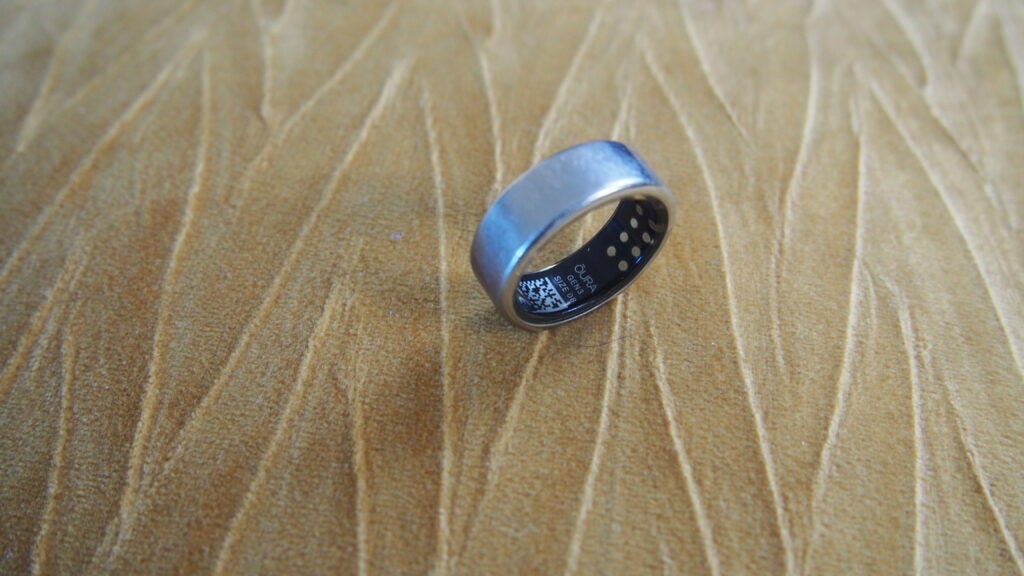
Latest deals
Should you buy it?
If you want a great sleep and activity tracker: This smart ring by Oura is great for counting steps and taking it to bed to grab useful sleep stats and better understand your recovery and how prepared you are for tackling a busy day.
You want a ring for tracking exercise time: The Oura Ring 3 simply can’t replace the level of exercise tracking you’ll find on much cheaper watches. It relies on third-party app support to get the best data to fuel its all-important Readiness scores.
Final Thoughts
The Oura Ring 3 is the best smart ring you can buy if you care about sleep and basic activity data and want something that can also give you a sense of how you might be dealing with a fever, cold or virus. You just have to be willing to pay for both hardware and software to get the best tracking experience.
How we test
We thoroughly test every fitness tracker we review. We use industry standard testing to compare features properly and we use the watch as our main device over the review period. We’ll always tell you what we find and we never, ever, accept money to review a product.
Heart rate data compared against dedicated heart rate devices
FAQs
Yes, you can use the Oura Ring 3 without a membership, but you won’t have access to features beyond data such as daily scores, battery status and basic profile information.
The Oura Ring 3 can automatically detect when you’ve exercised while wearing the ring and track exercise heart rate, but it doesn’t offer any GPS support to track outdoor workouts, such as running and cycling.
Jargon buster
GPS
An abbreviation of the Global Positioning System, which uses satellite communication to pinpoint your location. Some smartwatches are able to achieve this communication without the use of a smartphone.
Verdict
The Oura Ring 3 is the best smart ring you can buy.
Pros
- Reliable sleep tracker
- Easy-to-use companion app
- Comfortable to wear 24/7
Cons
- Can pick up scratches
- Exercise HR support unreliable
- Battery drain when SpO2 enabled
Availability
- UKRRP: £299.99
- USARRP: $349
-
Tracking skillsTracks heart rate, temperature and blood oxygen data -
Automatic activity detectionNo need to faff with the app to get a workout going -
Up to seven days of battery lifeYou won’t be charging it every night
Introduction
Smart rings are a thing, and the one that’s leading the charge to move tracking away from the wrist is Oura.
The Oura Ring 3 is the brand’s third-generation smart ring, now packing more sensors, promising to track health, sleep, fitness and wellness better than its previous rings.
You’ll still need to pay for the wearable that lives on your digit as well as for full access to the software that delivers your stats and insights, which can also tell you whether you’re under the weather or getting good enough sleep.

Design and comfort
- Available in five colours
- Made from titanium
- Weighs 4-6g
The most appealing aspect of Oura’s rings has been the fact that they look like very stylish and elegant rings that also happen to house some tech. That doesn’t change with the latest release.
Once you’ve gone through the sizing part of the process, picking a ring size that works, you can choose from five different colours and two ring styles. The Horizon version features a fully round ring design, while the Heritage model has a flatter top edge, which will sit on the top of the finger. Both versions are made from titanium to help give the ring a light yet high-grade feel, with a PVD (physical vapour deposition) coating adding a layer of resistance against scratches.
However, the added coating didn’t quite have the desired effect of guarding against those scratches on the silver Heritage Ring I tested. Oura does now state that daily wear may result in scratches, and that’s what I’ve seen over months of living with it. That attraction to scratches doesn’t entirely ruin the attractiveness, but it’s definitely a shame it doesn’t do a better job of keeping it box-fresh.
The ring is comfortable to wear day and night, and it’s easy to ignore the sensor array that sits inside it. As it weighs 4-6g (depending on the style) and is 2.5mm thick, it’s not bulky, either.
To further encourage you to wear it 24/7, the Oura Ring 3 carries a water-resistant rating that makes it safe to be submerged in water up to 100m. I showered with it and took it to the pool and have no issues to report on the durability front.

Fitness and health tracking
- Blood oxygen sensing
- Activity and sleep tracking
- Skin temperature monitoring
- Exercise HR
Beneath that titanium exterior, the Oura Ring 3 manages to pack in a strong array of sensors. There’s an optical heart rate sensor, which you can identify from the green LEDs that illuminate the underside of the ring. There’s a red infrared sensor to monitor blood oxygen levels, and there are also skin temperature sensors and an accelerometer, to handle step tracking and deliver sleep monitoring in the same way as most wrist-worn wearables.
Those sensors provide a range of metrics that are primarily used to generate Readiness scores – grabbing information like resting heart rate, body temperature, sleep and sleep balance to assign a score out of 100. The higher the number, the better equipped you are to tackle the day.
The Readiness scores hugely rely on the sensors being able to accurately generate data, and I’d say, on the whole, they do. For resting heart rate, I found the average was within 3-4bpm of Fitbit’s pretty reliable continuous and resting heart rate readings. The Oura Ring 3 did seem to have the odd tendency to report low heart rate readings – just below my usual early 40bpm, which I think may be attached to some movement of the ring that will impact the reliability of those readings.
Oura continues to conduct its own research to validate its technology, with one study suggesting its PPG (photoplethysmography) sensor matched with clinical-grade ECG (electrocardiogram) sensors. I definitely saw good accuracy, although I’d debate if it’s ECG-grade.
The ring also tracks body temperature to influence that Readiness score. This can indicate when you might be coming down with something. When I got Covid, my body temperature rose by 2.2°C, and I was able to track it starting to return to normal as I recovered. During that period of illness, the app suggested switching to a rest mode and stopping tracking until I would start to feel better again.
Another key aspect that Readiness scores is sleep tracking. I’d say this is a real strength of Oura’s from a comfort point of view of taking a ring to bed as opposed to a watch. It will break down total sleep, time spent in bed, and sleep efficiency as well as track blood oxygen saturation, which reassuringly indicated I had optimal breathing regularity on the nights I tested it.
The ring also tracks heart rate and heart rate variability, which is a heart-based measurement that offers an indication of stress being put on the body. That core sleep-tracking experience was up there with Fitbit in terms of measuring the length of sleep time, and it offered similar Awake, REM, Deep, and Light sleep stages.

Oura also pays attention to movement and how active you are, by using the onboard accelerometer to track steps and the distance walked. It’s capable of automatically recognising when you’ve exercised with the ring on, but it will also let you manually add workouts and has now added the ability to track heart rate in real time during workouts.
Doing the latter reliably is perhaps an area still in need of improvement. It actually did a very good job of automatically detecting workout types, which were generally swimming, runs, indoor workouts and gym sessions. Manually adding a workout was relatively straightforward, although, for me, recording workout heart rate was generally pretty unreliable. At the end of some workouts, it would suggest the ring had moved during the workout, which affected delivering reliable readings.
You can import workout data from Apple Health, Google Fit and Strava to get useful Activity data and better shape those Readiness scores.

App
- Available for Android and iOS
- Membership required for full access
The Oura Ring 3 doesn’t include a screen, so you’ll need to download the Oura companion app, which is available for Android and iOS. I used the Ring 3 with both platforms and found the experience to be pretty consistent across the two platforms.
You can access and use the app for free, but you’ll need the £5.99-a-month subscription to see data beyond Readiness, Sleep, and Activity scores and some basic profile information. The ring comes with one-month complimentary access, but then it’s time to start paying up. Having said that, the membership here is half the price of a monthly Spotify Premium subscription, while sleep and recovery wearable Whoop’s subscription service ranges from £18 to £27 a month.
What you do get with the Ring app is an environment that rivals Fitbit in terms of feeling like a place that isn’t daunting or overwhelming to use. The big emphasis on the Readiness scores and the attached recommendations and advice works well. You can dig into individual data and metrics if you want, but you can quickly establish if you need to pay attention to your sleep time or to something else that has impacted your Readiness score.
There are also some useful additional features built around helping you to fall asleep or relax. This is done through audio-guided sessions. Some are breathing exercises, while others tell you relaxing stories to get you ready for some slumber.

Battery life
- Up to seven days of battery life
- Fully charges in 20 to 80 minutes
- Proprietary charging cradle
Oura says its newest ring is capable of going for up to seven days without charge, but I’d say that’s hugely ambitious. In fact, it’s a fair amount less than that – think two or three days max.
Prior to turning on the dormant SpO2 sensor, the ring could last just about four days, continuously monitoring heart rate, sleep, and metrics like body temperature.
Enabling the SpO2 had a sizeable impact on battery performance – in a similar way that turning on the Pulse Ox sensor on Garmin’s watches results in a bigger drain on the battery.
There’s no way to disable any of the monitoring features, which places huge importance on the low-battery phone notifications you can set up to make sure you’re not walking around with a ring that’s no longer smart.
When it comes to charging, there’s a proprietary cradle that plugs into a USB-C cable. When you drop the ring on it, a single notification light will indicate it’s in charging mode – at least Oura has delivered a pretty simple charging setup.

Latest deals
Should you buy it?
If you want a great sleep and activity tracker: This smart ring by Oura is great for counting steps and taking it to bed to grab useful sleep stats and better understand your recovery and how prepared you are for tackling a busy day.
You want a ring for tracking exercise time: The Oura Ring 3 simply can’t replace the level of exercise tracking you’ll find on much cheaper watches. It relies on third-party app support to get the best data to fuel its all-important Readiness scores.
Final Thoughts
The Oura Ring 3 is the best smart ring you can buy if you care about sleep and basic activity data and want something that can also give you a sense of how you might be dealing with a fever, cold or virus. You just have to be willing to pay for both hardware and software to get the best tracking experience.
How we test
We thoroughly test every fitness tracker we review. We use industry standard testing to compare features properly and we use the watch as our main device over the review period. We’ll always tell you what we find and we never, ever, accept money to review a product.
Heart rate data compared against dedicated heart rate devices
FAQs
Yes, you can use the Oura Ring 3 without a membership, but you won’t have access to features beyond data such as daily scores, battery status and basic profile information.
The Oura Ring 3 can automatically detect when you’ve exercised while wearing the ring and track exercise heart rate, but it doesn’t offer any GPS support to track outdoor workouts, such as running and cycling.
Jargon buster
GPS
An abbreviation of the Global Positioning System, which uses satellite communication to pinpoint your location. Some smartwatches are able to achieve this communication without the use of a smartphone.



















